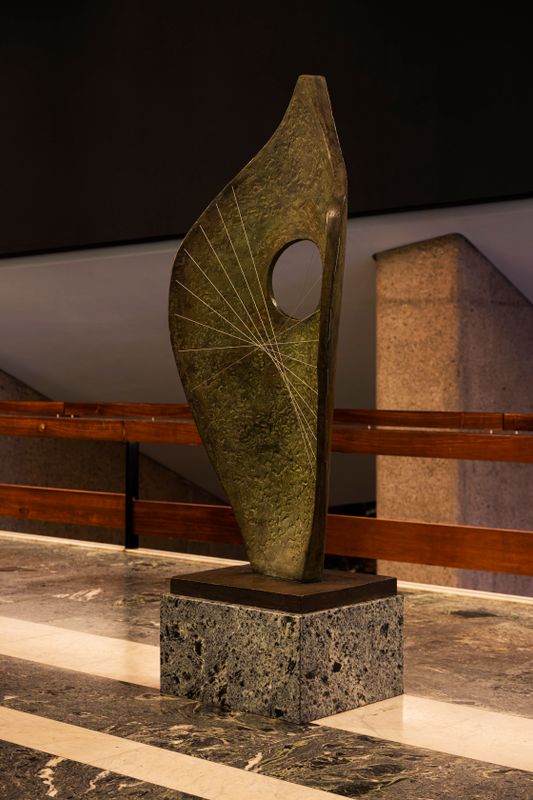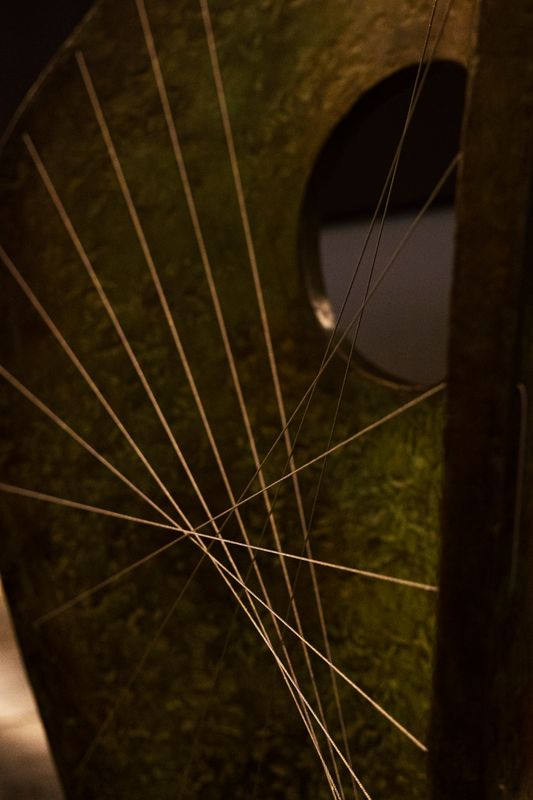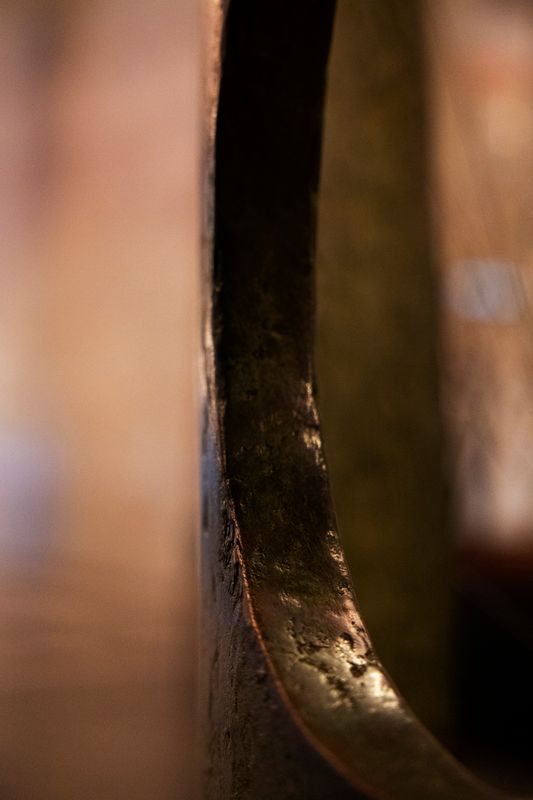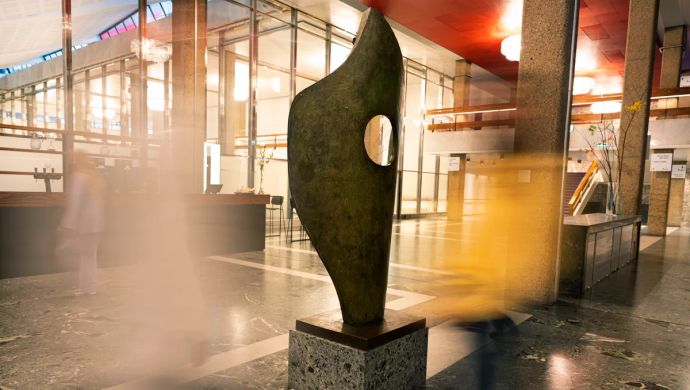Barbara Hepworth | Curved Form/Bryher II
Artist: Barbara Hepworth (1903-1975)
Artwork: Curved Form/Bryher II (1961/1966)
Collection: Rotterdam municipal collection
Acquisition: Erasmusstichting
De Doelen had great ambitions. Sculptures were to be placed not only at the entrance, but also in the common areas, corridors and foyers. And so they were. With the opening of the concert hall, the public was also introduced to a series of brand-new artworks, such as the beautiful sculpture by British sculptor Barbara Hepworth. By the time the 1960s rolled around, she had become one of the leading British sculptors. She delved into cubist ideas, contemplated abstraction, and built an idiosyncratic oeuvre in which ‘the inner space’ plays a central part: hollowed-out voids that look completely different from the inside and the outside. Hepworth sought associations of form and cavity, of illusory openings to another world, often connected by ropes and cables.
Her 1963 work Winged Figure is particularly striking, mounted on a façade on London’s Holles Street, near the junction with Oxford Street.
The sculptor refused to perceive her work as feminine or to have it interpreted as feminist. "Art is anonymous," she stated, "art does not compete with men." Hepworth was friends with the sculptor Henry Moore, who had designed the brick façade relief on the Bouwcentrum in Rotterdam in 1955. Department store de Bijenkorf had also acquired a sculpture by Moore for its new location on the Coolsingel. British sculpture was flourishing. It was thanks to the Erasmusstichting (Erasmus Foundation) that de Doelen was able to acquire a work by Barbara Hepworth during this time. The foundation was established in 1911 by ethnographer and philanthropist Elie van Rijckevorsel and aims to promote art, education, and science in Rotterdam. The foundation donated the work Curved Form/Bryher II (1961) to celebrate the realization of de Doelen, following a suggestion by Coert Ebbinge Wubben, director of Museum Boijmans Van Beuningen.
In the meantime, Hepworth had been appointed Officer of the Order of the British Empire and knighted as 'Dame Commander.' Having received an order of chivalry, she got to use the title 'Dame' and place ‘DBE’ after her name. She must have chuckled, since she remained in the shadow of male colleagues such as Henry Moore for a very long time. Six years after the opening of de Doelen, Hepworth died in a fire in her studio in St. Ives, Cornwall. Her former studio (and residence) is now home to the Barbara Hepworth Museum.







